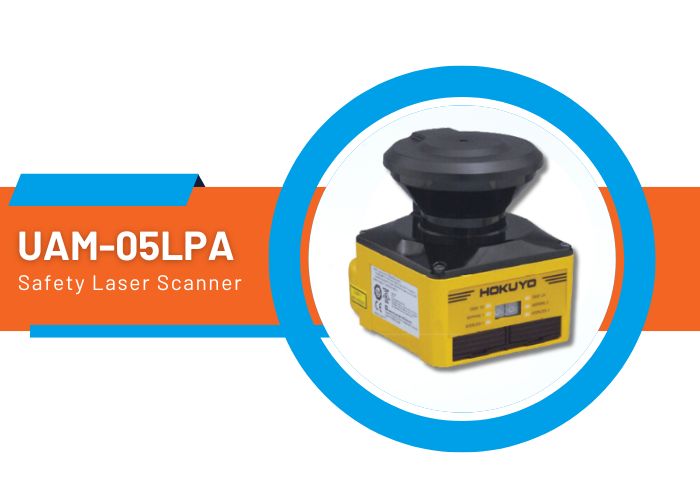From American sci-fi writer Isaac Asimov coining the word “robotics” in 1942 to George Devol inventing the first robot, Unimate, in the early 1950s to Engineered Arts’ most advanced humanoid robot, Ameca, developed in the 21st century, we have come a long way.
As for industrial robots, over 1.85 million were installed in various industries worldwide between 2019 and 2022, with its market size expected to exceed USD 165 billion by 2028.
While robotics is not new, recent advancements in hi-tech sensors and emerging technologies such as ML, AI, IoT, etc., have propelled it to new heights.
Consequently, highly efficient robotic work cells have emerged, with sensors among their most critical components. Sensors help robots accurately perceive and interact with their surroundings, ensure the safety of human workers and equipment, and even adapt to changing environments.
In this article, we explore what robotic cells are, how sensors are used to build efficient, adaptive, and safe robotic work cells, and their benefits.
What Is a Robotic Work Cell
Unlike a standalone, programmable robot, a robotic work cell contains several components besides one or more robots, such as machine tools, end-effectors, part feeding/handling systems, safety mechanisms, and possibly human workers.
A robotic cell is essentially a self-contained unit with a dedicated workspace in a manufacturing or industrial unit. It is specifically designed to optimize the robot’s performance and ensure the safety of surrounding equipment and technicians.
Robotic work cells come in various forms:
- Single-station work cell – Built for a single operation
- Multi-station work cell – Can perform multiple operations within a single workspace
- Collaborative work cell – Built for cobots (robots that work alongside humans) with safety enhancements
- Mobile work cell – Can move from one workstation to another
- Customized work cell – Built for specialized applications
Whatever the type, it’s crucial to maintain safety within a work cell since it contains multiple components, potentially including humans. That’s where sensors come in. Different sensors, such as LiDAR, safety laser scanners, and proximity sensors, play a key role in preventing mishaps when massive robots work within the cell.
Plus, since sensors are the “eyes and ears” of the robots, they provide crucial information to the robots about their surroundings, helping them navigate and perform their designated tasks with the utmost precision.
How Sensors are Used in Robotic Work Cells
Cutting-edge sensors enable industrial robots to perform tasks with enhanced autonomy, productivity, efficiency, and safety in several ways:
Object Detection and Recognition
With vision sensors, such as 2D and 3D cameras enhanced with ML algorithms, robots can identify and locate other components within the cell to verify their presence and orientation before performing any action.
Process Control and Monitoring
Sensors also help relay the robot's information regarding various process parameters, such as force/torque, pressure, and temperature. This data from the sensors ensures the smooth functioning of the robot within the cell, maintaining product quality and safety.
Collision Avoidance and Safety

Plus, LiDAR sensors attached to a robot can create a 3D map of the cell, providing enhanced presence detection, collision avoidance, area monitoring, and spatial recognition.
Adaptive Control
Emerging technologies like ML/AI can enhance sensors to provide real-time feedback gathering and analysis from various operations within the cell. This enables robots to adjust their movements almost instantaneously and perform operations more flexibly and safely.
Data Collection and Analysis
Sensors can also collect data related to machine performance, process parameters, and product quality. This data can be quickly and reliably transmitted over various distances using high-speed optical data transmitters. It helps perform process optimization and predictive maintenance, increasing the components’ operational life.
Benefits of Utilizing Sensors in Robotic Work Cells
Sensors are not just important components; they are fundamental to the safe, efficient, and flexible operation of modern robotic work cells. A sensorless robot is like a person driving a vehicle on a busy highway with their eyes and ears closed, oblivious to potential dangers.
Here are a few key benefits of using sensors in a robotic work cell:
- Improved efficiency: Sensors enable robots to work faster and more accurately, increasing productivity and decreasing downtime.
- Enhanced safety: Safety sensors prevent accidents and injuries within the work cell, especially when cobots are involved.
- Increased adaptability: AI-powered sensors enable robots to adapt to changes in their work cells in real time and work with greater precision.
- Cost reduction: Installing multiple robotic cells for various tasks can reduce labor costs and dramatically increase high-quality output, ensuring a profitable business for decades.
Embrace Cutting-edge Automation With Hokuyo’s Sensors
Since robotic work cells house several components, including robots and sometimes humans, protecting them from mishaps and disasters is imperative.
Hokuyo-USA has your back. With a wide range of sensors, we pride ourselves on enabling several industries, including automotive, manufacturing, and logistics, to automate their key processes using sensors that prioritize efficiency and safety.
Explore the entire range of our state-of-the-art sensors, or contact us with your specific automation requirements.

 Factory Automation
Factory Automation Logistics Automation
Logistics Automation Process Automation
Process Automation Crane Collision Avoidance
Crane Collision Avoidance LiDAR/Obstacle Detection
LiDAR/Obstacle Detection Safety Laser Scanners
Safety Laser Scanners Optical Data Transmission
Optical Data Transmission Hot Metal Detectors
Hot Metal Detectors Laser Distance Sensor
Laser Distance Sensor Blog
Blog Whitepapers
Whitepapers Case Studies
Case Studies Infographics
Infographics